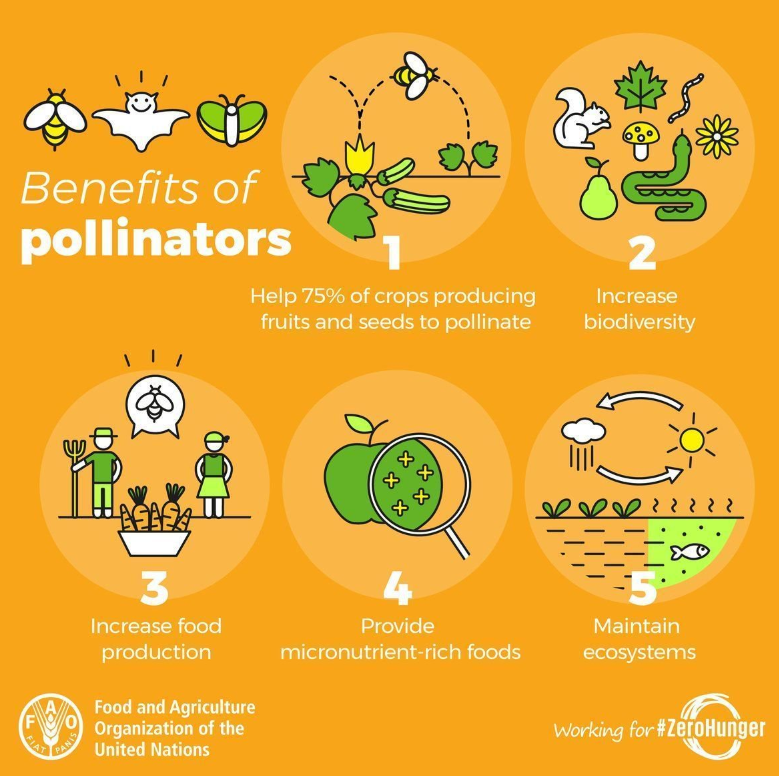New infectious diseases among bees threaten world’s economies
(Source – The Hindu, International Edition – Page No. – 7)
| Topic: GS3 – Environment |
| Context |
| ● Insect pollinators are vital for global agricultural productivity, with over 75% of crops depending on them.
● However, threats like habitat loss, climate change, and emerging diseases are endangering both managed and wild pollinators, especially in regions like India. ● Focused research and conservation measures are essential to protect biodiversity and food security. |
Importance of Pollinators
- Over 75% of food crops and flowering plants depend on insect pollinators like bees, wasps, beetles, flies, moths, and butterflies for successful harvests.
- Declines in pollinator populations due to pesticides, pollution, climate change, habitat loss, and emerging infectious diseases threaten agricultural productivity and economies worldwide.

Role of Wild Bees and Pathogen Spillover
- Wild bees are often more efficient pollinators than managed western honey bees (Apis mellifera).
- Research indicates pathogen spillover between managed honey bees and wild pollinators, with diseases like deformed wing virus and black queen virus threatening the health of wild species.
- A study in Switzerland found that shared habitats increased the viral loads in wild pollinators by up to 10 times.
Pollinator Diversity and Habitat Overlap
- India hosts over 700 bee species, including four indigenous honey bees: Asiatic honey bee, giant rock bee, dwarf honey bee, and stingless bee.
- Habitat loss forces pollinators to share smaller spaces, increasing disease transmission risks between managed and wild species.
Case Study: Thai Sacbrood Virus
- The Thai sacbrood virus outbreak in 1991-1992 devastated 90% of Asiatic honey bee colonies in South India.
- Recent reemergence of the virus highlights the vulnerability of native bee populations to infectious diseases.
- Transmission pathways of the virus remain unknown, posing a significant research gap.
Migration and Competition for Resources
- Managed honey bee migrations disrupt local ecosystems and compete with native pollinators.
- In Maharashtra, diseases linked to introduced honey bees have drastically reduced forest honey production.
Need for Focused Research
- Dedicated studies on emerging diseases like the Thai sacbrood virus can aid in early detection and prevention strategies.
- Monitoring and controlling diseases in managed colonies can minimise spillover risks to wild pollinators, safeguarding biodiversity and agricultural productivity.
| Practice Question: Discuss the significance of pollinators in global agriculture and biodiversity. Highlight the threats they face and suggest measures to address these challenges, with a focus on India’s pollinator diversity. (150 Words /10 marks) |

